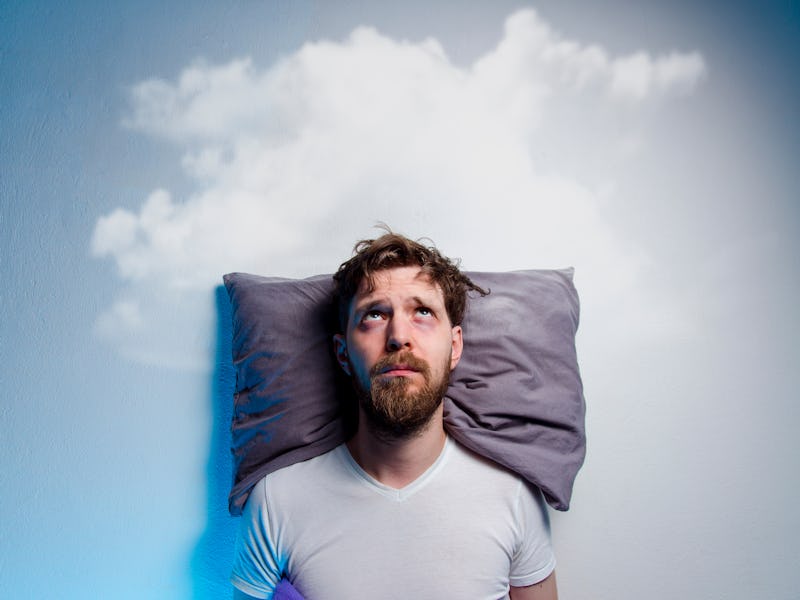An insomnia expert answers a huge question about social isolation

As a philosopher who researches insomnia, I’m struck by how similar the lockdown experience is with lying awake through the night, waiting for either sleep to come or the new day to dawn.
In particular, it is this warped relationship with time and the type of discomfort involved that makes the two experiences similar. I’ve found this analogy of likening lockdown to insomnia helpful for understanding the current situation and for evaluating how we respond to it.
Inspired by the work of the philosopher Emmanuel Levinas, I have identified three features common to most forms of insomnia that can be revelatory for those living under lockdown. These are the waiting involved, along with the watchful and wasteful feelings that accompany it.
The insomniac, regardless of how they pass this time, is in a time of waiting. They wait for the soft relief of sleep – tantalizingly close and yet so far. But, when things get desperate enough, they also wait for the return of daylight, which justifies the abandoning of this waiting, the getting back up, and returning to the activities that order our lives.
Either way, this waiting is torturous and anticipatory. It involves repeated imaginings of, and reachings for, that which we long for.
Under lockdown, we are, at a societal level, thrown into a kind of waiting akin to that of the insomniac in bed. Boredom in the face of this waiting quickly morphs into desperation.
We become so sick of our waiting that we imagine and anticipate not only the successful treatment of Covid-19, and a return to “healthy” normality, but moreover any future beyond this drawn-out time of confinement.
This anticipatory structure of insomnia is connected to a second and equally cruel aspect of sleeplessness. The insomniac is all too aware of their situation. They hear every tick of the clock as they wait.
They sense sleep, just out of reach. The familiar becomes strange and the unnoticed is drawn into view: the ambient noises of the building, the beat of their own heart.
Just so under lockdown. Our waiting at home is not easily ignored or avoided by distractions and activities. Instead, we remain active, hyper-aware, and distractedly drawn to the constant stream of news. And yet all this information leads us nowhere. It merely throws us back into the mundane and into an awareness that we are still waiting.
This watchful waiting in insomnia is experienced as wasteful. The suffering from insomnia is riven with the knowledge not only of our powerlessness to end this waiting but also that one is wasting something oh so precious: not just one’s time but one’s time of rest.
The thought, “I should be asleep” echoes through every experience of insomnia, as does the imagined loss of productivity the following day (“I will pay for this tomorrow”). These echoes bring with them agitation, anxiety, and anger.
Similarly, in lockdown, we know we are powerless to hasten the end of our waiting but feel pressure to be productive. We should enjoy this extra time we have on our hands, either spending it with our loved ones or taking the chance to improve ourselves. Needless to say, for many, such pressure is oppressive. They feel lockdown as time wasted.
Vicious circles interrupted — These features of insomnia and lockdown have a viciously circular structure. One waits for sleep and thus it never comes. One is aware of this absence and thus the experience of waiting is intensified. One grows angry at this futile passing of time, this inactivity without reward.
In this sense, the experience of insomnia perpetuates and strengthens its grip on us. While suffering from lockdown does not extend the lockdown, it certainly intensifies the suffering.
Vicious circles are by their very nature hard to escape and they are harder to escape the longer we inhabit them. But it is possible to interrupt these structures.
Research increasingly suggests that the best method of escaping insomnia is to avoid a direct, one-on-one conflict with it. Give up on the time of waiting and retreat to the kitchen or the living room. Anywhere but the bedroom, anywhere but the place of sleep(lessness). Locked down, such a change of place is limited.
But we can reconceive and change the spaces we inhabit. This can be as simple as changing a chest of drawers into a desk and inviting friends, via video, to join you around it.
It can be the changing of the street and the park into spaces for conversation and support, at a safe distance. Staying at home does not mean that this home and its locale, cannot be changed, reshaped, or reimagined.
The other fundamental element of insomnia that we can take control of is how we spend our time. Through coordination, compassion, and consideration, we can make time for each other. Time formed around one another, put aside for checking in on one’s elderly neighbors or for a call with an immunosuppressed friend, is time broken free from the isolation and monotony of lockdown.
This is no guarantee. The analogy with insomnia should make, at least, this fact clear. Insomnia will probably return and lockdown will probably continue to be difficult. Our struggles, anxieties, and fears will not disappear. But that doesn’t mean we must face them alone. In fact, that’s precisely what we shouldn’t do.
This article was originally published on The Conversation by Patrick Levy at the University of Dundee. Read the original article here.